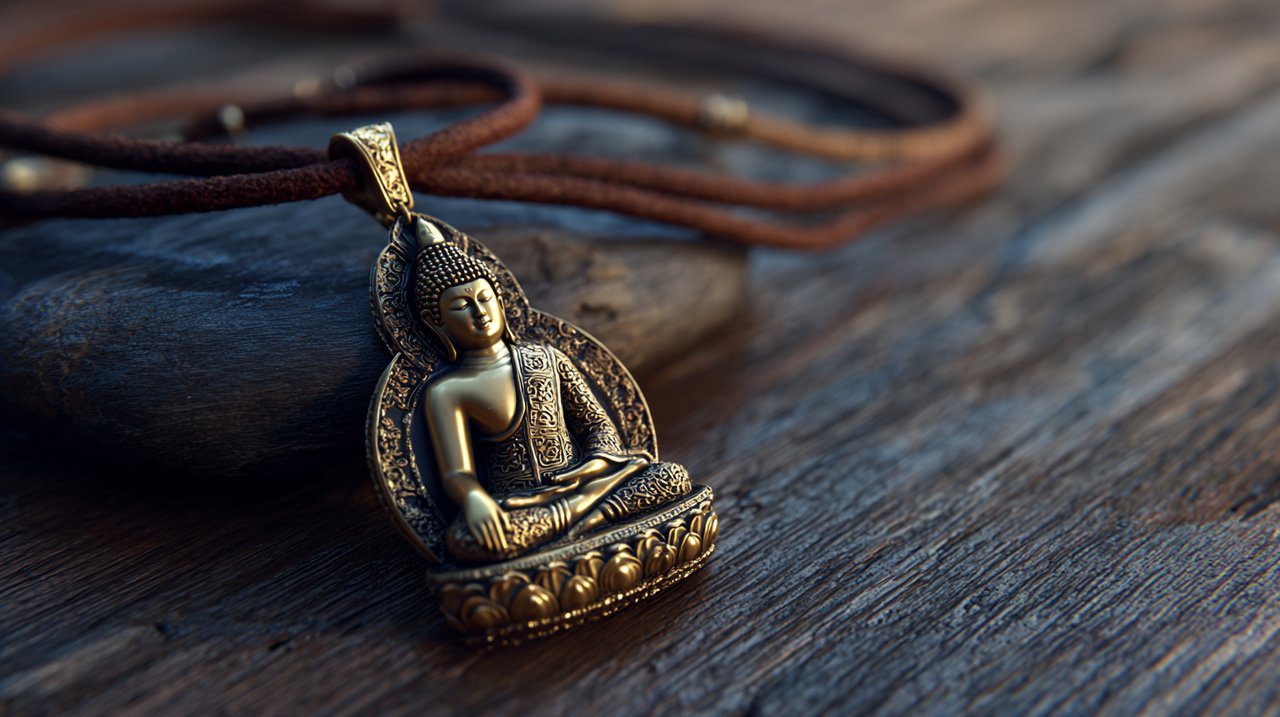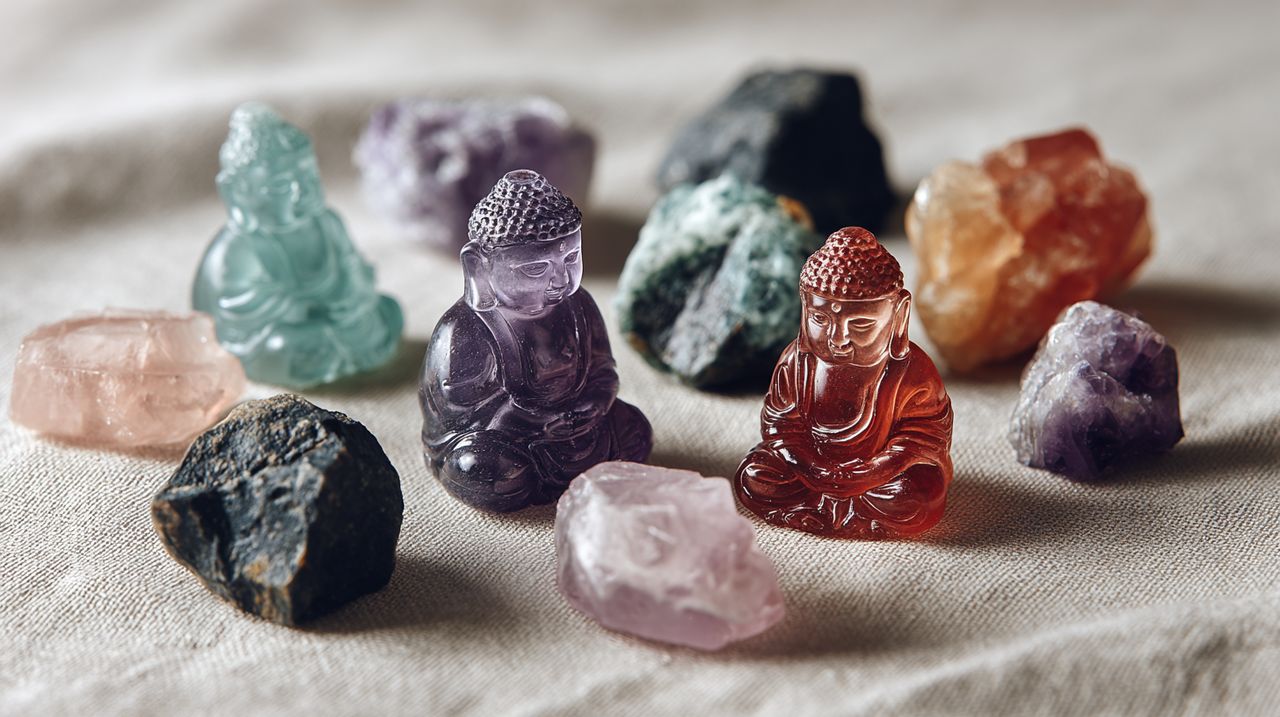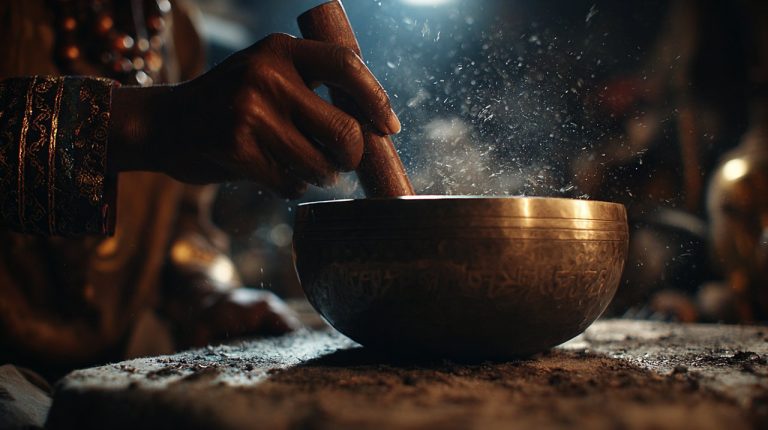Buddha Necklace Meaning: A Guide to Ancient Wisdom in Modern Adornment
In a world often characterized by rapid change and external demands, certain symbols possess an extraordinary capacity to endure. They transcend time and cultural boundaries, offering not just solace but profound wisdom. The significance of a Buddha necklace, for instance, extends far beyond mere ornamentation; it serves as a silent, yet powerful, conduit to ancient philosophies that advocate for inner tranquility and enlightened living.
This exploration systematically unpacks the multifaceted import of these revered adornments, shedding light on their historical roots, symbolic layers, and their practical application in contemporary spiritual practice. We delve into how these pieces become more than objects, transforming into anchors for mindfulness in a ceaselessly moving world.

The Buddha Necklace: Ancient Wisdom in Modern Form
A Buddha necklace is not merely a piece of jewelry; it functions as a portable emblem of profound spiritual principles. It acts as a personal reminder of the path to awakening, embodying the very essence of mindfulness. Wearing such an item can effectively transform it into a "mobile meditation space," enabling individuals to carry a sense of peace and introspective awareness wherever they go.
This perspective elevates the necklace from a simple decorative object to a personal anchor for spiritual reflection and continuous growth. It stands as a testament to the enduring power of symbolic representation in fostering inner calm amidst external pressures.
Historical Origins and Cultural Evolution
The practice of adorning oneself with symbols of spiritual significance is a tradition stretching back millennia, deeply rooted in diverse ancient cultures. While the modern iteration of a Buddha necklace might appear contemporary, its lineage traces directly to the earliest Buddhist communities.
Initially, within these communities, relics or larger images of the Buddha were venerated primarily within temples. However, as Buddhism began its expansive journey across various lands, a natural human desire for a more personal, tangible connection to the enlightened one emerged. This aspiration eventually led to the creation of smaller, wearable effigies and beads, bringing the sacred into daily life.
The evolution of these sacred adornments reveals a fascinating journey:
- Early Forms: Long before Buddhism, amulets and talismans were prevalent across many cultures, often imbued with protective qualities and used to ward off malevolent forces.
- Buddhist Adaptation: A significant turning point arrived with the introduction of actual Buddha images and the subsequent development of mala beads. These beads became indispensable tools for prayer and meditation, marking a profound shift in spiritual practice.
- Modern Resurgence: In recent centuries, and particularly within the contemporary global landscape, the Buddha necklace has experienced a remarkable resurgence in popularity. It now serves as a universally recognized symbol of peace, wisdom, and spiritual aspiration for an increasingly diverse global audience.
Diverse Symbolism of Buddha Figures: From Maitreya to Dhyana
The depiction of the Buddha on a necklace is rarely arbitrary; each distinct pose or figure carries a specific and nuanced meaning. These variations reflect different facets of enlightenment and offer unique spiritual guidance, enriching the wearer’s connection to the piece beyond its aesthetic appeal.
Understanding these specific representations allows for a deeper engagement with the necklace as a spiritual tool:
- Laughing Buddha (Maitreya): Often portrayed as jovial and rotund, the Laughing Buddha, or Maitreya, embodies happiness, abundance, and good fortune. He is revered as the future Buddha, destined to usher in an era of joy and prosperity. Adorning this form can serve as a potent daily reminder to cultivate inner joy and radiate positivity into the world.
- Medicine Buddha: This particular form distinctly embodies the healing aspect inherent within Buddhist teachings. It represents healing, profound compassion, and the alleviation of suffering in all its forms. A Medicine Buddha necklace is frequently sought by individuals pursuing physical recovery, emotional solace, or spiritual well-being.
- Dhyana Buddha (Meditation Buddha): Characterized by a serene, seated posture with hands meticulously placed in the meditation mudra (Dhyana Mudra), this Buddha symbolizes meditation, deep contemplation, and inner peace. It profoundly encourages the wearer to seek stillness and wisdom through consistent mindful practice, acting as a profound depth anchor for personal introspection and spiritual grounding.
- Shakyamuni Buddha: This represents the historical Buddha, Siddhartha Gautama himself. He is frequently depicted in various mudras, or specific hand gestures, each conveying distinct meanings such as teaching, offering protection, or signifying fearlessness. Each mudra thoughtfully adds a layer of specific guidance to the necklace’s overall spiritual narrative.
Materials, Colors, and Meanings: Interpreting the Spiritual Dimension of Buddha Necklaces
The selection of material and color for a Buddha necklace is far from arbitrary; each chosen element significantly contributes to its specific spiritual meaning and perceived energetic properties. These deliberate choices enable a deeper, more personalized connection to the inherent spiritual essence of the adornment, transforming it into a truly bespoke spiritual companion.
Gemstones and Jade: Energy and Protection
The choice of materials, particularly for a stone Buddha necklace, is paramount. Various stones are widely believed to possess unique energetic vibrations and offer distinct protective qualities, making their selection a crucial aspect of the necklace’s spiritual efficacy.

Consider the profound properties of these commonly utilized gemstones:
- Jade: Highly revered across numerous Asian cultures, jade is considered a stone of purity, serenity, and harmony. A jade Buddha necklace is often worn for its protective qualities, to attract good fortune, and to cultivate wisdom. Its uniquely smooth, cool touch also provides a grounding sensation, fostering a sense of calm.
- Obsidian: Recognized as a powerful protective stone, obsidian is widely believed to shield against negativity and dissolve emotional blockages. An obsidian Buddha necklace can thus impart a profound sense of security, empowering the wearer to confront life’s challenges with unwavering strength and resilience.
- Amethyst: Celebrated for its inherently calming properties, amethyst is intrinsically linked with spiritual awareness, profound peace, and heightened intuition. Wearing an amethyst Buddha actively encourages clarity of mind and facilitates a deeper connection to higher consciousness and inner wisdom.
- Rose Quartz: This gentle stone is universally associated with unconditional love and profound compassion. A rose quartz Buddha can actively foster empathy, cultivate self-love, and facilitate the healing of emotional wounds, promoting a sense of inner warmth and acceptance.
Different Colors of Buddha: Specific Guidance and Energy
Beyond the intrinsic properties of the stone itself, the color of the Buddha figure or the accompanying beads can further refine and deepen the specific spiritual meaning conveyed by the necklace. This chromatic dimension adds another layer of personalized guidance.
Each color carries its own distinct energetic signature and symbolism:
- Green Buddha: This hue is frequently associated with healing, vibrant growth, and profound renewal. Green Buddhas, especially when crafted from jade, powerfully reinforce themes of vitality, balance, and natural harmony, connecting the wearer to the rejuvenating forces of nature.
- White/Clear Buddha: Symbolizing purity, crystalline clarity, and spiritual illumination, a white or clear Buddha can significantly aid in personal purification processes and foster a stronger connection with universal wisdom, promoting mental and spiritual transparency.
- Gold Buddha: This color unequivocally represents wealth, prosperity, and spiritual richness. It serves as a potent reminder of both material abundance and, more importantly, the invaluable spiritual treasures one cultivates on their path, encouraging a holistic view of prosperity.
- Black Buddha: While occasionally linked with protective energies, a black Buddha typically signifies the profound act of overcoming darkness, undergoing deep transformation, and attaining profound wisdom. It acts as a powerful emblem of resilience, inspiring the wearer to transcend obstacles and emerge stronger and wiser.
Mala Beads and Yoga Necklaces: Spiritual Practice in Daily Life
The conceptual framework of a Buddha necklace frequently converges with the practices associated with mala beads and yoga necklaces. These items are not merely decorative accessories; they function as integral tools for spiritual discipline, meticulously designed to foster mindfulness and concentration in everyday life.
Mala Beads: Chanting, Meditation, and Introspection
Mala beads, often akin to a Tibetan mala, traditionally comprising 108 individual beads, are ancient instruments utilized across various spiritual traditions, notably Buddhism and Hinduism, for focused meditation and prayer. Each bead is typically counted as a mantra is recited, thereby aiding in the cultivation of deep focus and rhythmic breathing, anchoring the mind in the present moment.
The mala is not merely a string of beads; it is a tangible link to intention, a rhythmic guide for the mind’s journey inward.
Wearing a buddhist mala necklace extends their primary purpose beyond formal meditation sessions. They become a constant, tactile reminder of one’s spiritual intentions, subtly encouraging moments of mindfulness throughout the day. Consider, for instance, a busy professional who might subtly touch a bead during a stressful meeting, instantly recentering themselves on their core intention for peace and clarity.
Yoga Necklaces: Connecting Energy and Balancing Body-Mind
The term ‘yoga necklace’ often refers to a specific type of mala or a pendant worn during the practice of yoga. These necklaces are widely believed to enhance the practitioner’s connection to their spiritual core, facilitate the balancing of energy centers (chakras), and deepen their meditative state during practice. The physical weight and presence of the necklace can serve as a potent grounding element, helping the wearer remain fully present and embodied during poses and breathwork.
Ultimately, these adornments embody the profound principle that spiritual practice extends far beyond the confines of the yoga mat, seamlessly integrating into one’s everyday existence and fostering continuous holistic well-being.
Choosing, Wearing, and Dream Revelations of Buddha Necklaces
The act of selecting and subsequently wearing a Buddha necklace transcends mere aesthetic preference; it represents a conscious decision deeply rooted in personal intention. Furthermore, the unexpected appearance of such an item within one’s dreams can offer particularly profound insights into the subconscious landscape, revealing hidden spiritual connections.
How to Choose Your Buddha Necklace
Choosing a Buddha necklace is an inherently personal and intuitive process. It necessitates a moment of reflection: what specific qualities or aspects of the Buddha’s timeless teachings resonate most profoundly with you at this particular juncture in your life? Perhaps you are seeking inner peace, abundance, spiritual protection, or clear guidance in your meditative practice.
Consider the following guiding principles when making your selection:
- Intention: What specific spiritual quality do you aspire to cultivate within yourself or embody more fully in your daily life? Let this aspiration guide your choice.
- Symbolism: Which particular Buddha figure or mudra, among the diverse representations, speaks most directly to your current spiritual needs and aspirations? Allow its specific meaning to draw you in.
- Material & Color: Are you instinctively drawn to the robust protective energy of obsidian, the serene healing properties of jade, or the unique vibrational frequency of a specific color? Trust your innate energetic resonance.
- Intuition: Ultimately, the most suitable necklace will often elicit an immediate, undeniable sense of rightness. It will create an instant connection, signaling its alignment with your deepest intentions.
Wisdom in Wearing and Daily Care
Wearing a Buddha necklace is much more than a fashion statement; it is a profound gesture of respect and a continuous affirmation of one’s spiritual intention. While there are no rigid dogmas governing its wear, many practitioners thoughtfully choose to wear it close to the heart, symbolizing compassion and the cultivation of inner peace.
It is generally advisable to remove the necklace during activities that might potentially damage it or inadvertently compromise its perceived sanctity. This includes strenuous physical exercise, bathing, or engaging in tasks where it might be subjected to harsh conditions. Furthermore, mindful care extends to its placement and energetic hygiene:
- Respectful Placement: Always avoid placing the necklace on the floor or in locations deemed disrespectful or unclean, upholding its sacred status.
- Cleansing: Periodically, it is beneficial to energetically cleanse the necklace, especially if it is crafted from natural stones, to clear any accumulated or stagnant energies. This can be achieved through various methods, such as moonlight cleansing, gentle smudging with sacred herbs, or placing it upon a selenite plate.
- Mindful Interaction: Cultivate an attitude of treating the necklace as a sacred object. Let it serve as a constant, tangible reminder of your ongoing spiritual path and commitment to inner growth.
Buddha Necklaces in Dreams: Unlocking Subconscious Meanings
The appearance of a Buddha necklace within the landscape of dreams can be remarkably potent. Such dream imagery often signals a deep subconscious connection to significant spiritual themes or a burgeoning awareness of one’s inner wisdom. Dreams are, in essence, the nuanced language of the subconscious mind, and the symbols that manifest within them are rarely arbitrary or without deeper significance.
Interpretations of such dream encounters can vary, yet common threads emerge:
- Receiving a Buddha Necklace in a Dream: This powerful symbol could signify the dawn of a new spiritual awakening, a profound inner call to discover or reclaim inner peace, or the timely arrival of spiritual guidance in one’s waking life.
- Losing a Buddha Necklace in a Dream: This scenario might indicate a perceived disconnection from one’s spiritual center, a pressing need to reconnect with core values, or a subconscious fear of spiritual detachment and loss of direction.
- Wearing a Buddha Necklace in a Dream: This often points to a deep-seated desire for protection, an active search for wisdom and enlightenment, or a comforting sense of spiritual alignment and well-being already present within the dreamer.
Such dreams serve as powerful catalysts for self-reflection, gently prompting individuals to delve deeper into their spiritual journey and explore the profound, often hidden, meanings behind their everyday experiences.
The significance of a Buddha necklace is as multifaceted as the individuals who choose to wear them, yet an undeniable common thread unites each one: a profound connection to peace, wisdom, and continuous spiritual growth. Returning to our initial inquiry about enduring symbols in a world of flux, the Buddha necklace stands as a compelling answer.
From its ancient origins as a venerated emblem to its contemporary role as a personal meditation aid and spiritual anchor, this adornment continues to serve as a beacon for those seeking harmony and clarity in an increasingly complex world. By truly understanding its intricate layers of meaning, one transforms a simple accessory into a powerful tool for self-discovery and an enduring, tangible reminder of ancient wisdom’s timeless and universal relevance.
💡 Frequently Asked Questions
A Buddha necklace is more than just jewelry; it functions as a portable emblem of profound spiritual principles. It serves as a personal reminder of the path to awakening and mindfulness, acting as a "mobile meditation space" that helps individuals carry a sense of peace and introspective awareness wherever they go.
Common figures include the Laughing Buddha (Maitreya), symbolizing happiness and good fortune; the Medicine Buddha, representing healing and compassion; the Dhyana Buddha (Meditation Buddha), embodying meditation and inner peace; and Shakyamuni Buddha, the historical Buddha, often depicted with specific hand gestures (mudras) conveying meanings like teaching or protection.
The choice of material and color significantly contributes to a necklace's spiritual meaning. For example, jade is associated with purity and protection, while obsidian offers protection against negativity. Colors also carry specific meanings: green for healing, white/clear for purity, gold for prosperity, and black for overcoming darkness and transformation.
When choosing, consider your personal intention, the symbolism of the Buddha figure or mudra, and the energetic properties of the material and color, trusting your intuition. For care, wear it respectfully, often close to the heart, and remove it during activities that might damage it. It's advised to avoid placing it on the floor and to periodically cleanse it energetically using methods like moonlight or smudging.







